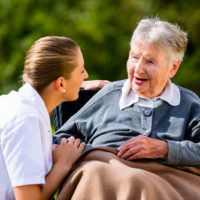
Consultation Today
- Tel: 561-686-6200
- Fax: 561-686-0303


Multiple sclerosis (MS) is a chronic, often disabling disease that attacks the central nervous system, the brain, spinal cord and optic nerves. Symptoms include numbness in the limbs or even paralysis or loss of vision. Progress, severity and specific symptoms are unpredictable. There are four courses of the disease:
Relapsing-Remitting MS. Patients experience clearly-defined attacks of worsening neurologic function. Approximately 85% are initially diagnosed with relapsing-remitting MS.
Primary Progressive MS. This disease course is characterized by slowly worsening neurological function from the beginning with no distinct relapses or remissions. Approximately 10% of people are diagnosed with Primary Progressive MS.
Secondary Progressive MS. With some patients, a period of Relapsing-Remitting MS is followed by a Secondary Progressive disease during which the disease worsens more steadily.
Progressive-Relapsing MS. in this relatively rare course of MS people experience deadly worsening disease from the beginning, but with clear attacks of worsening neurological function along the way. the majority of people with MS do not become severely disabled.
Parkinson’s disease is a brain disorder. It occurs when certain nerve cells in a part of the brain called the Substantia Nigra die or become impaired. Normally, these cells produce dopamine. Dopamine allows smooth, coordinated function of the body’s muscles and movement. When approximately 80% of the dopamine-producing cells are damaged, the symptoms of Parkinson disease appear. The key signs of Parkinson’s disease are tremors, slowness of movement, rigidity and difficulty with balance, small, cramped handwriting, stiff facial expression, shuffling walk, muffled speech, and depression.
Diagnosis of Parkinson’s often results in denial by the patient. It often causes major psychological issues early in the disease. There is a sense of disbelief, then anger, then acceptance. The patient has little control over the course of the disease. Lifestyle and work adjustments are necessary as the disease progresses. This results in enormous frustration for the patient.
Parkinson’s usually develops after age 65. However 15% of those diagnosed are under 50 years old. Parkinson’s is treated medically by medications that attempt to replace or mimic dopamine. Surgery can ease the symptoms but it is not a cure.
A stroke is a brain attack that occurs when a blood clot blocks an artery or a blood vessel breaks, interrupting the flow of blood to an area of the brain. When either of these happens, brain cells begin to die and damage occurs. When brain cells begin to die, abilities controlled by that area of the brain are lost. These often include speech, movement and memory. Two of three stroke survivors will have a disability. Stroke symptoms include sudden numbness or weakness of face, arm or leg, especially on one side of the body, sudden confusion, trouble speaking or understanding, sudden trouble seeing with one or both eyes, sudden trouble walking, dizziness, loss of balance or coordination, sudden severe headache with no known cause. Risk factors include a previous stroke, previous episode of transient ischemic attack (TIA) or mini-stroke, high cholesterol, high blood pressure, heart disease, arterial fibrillation and carotid artery disease. Lifestyle stroke risk factors include smoking, being overweight and excessive alcohol consumption.